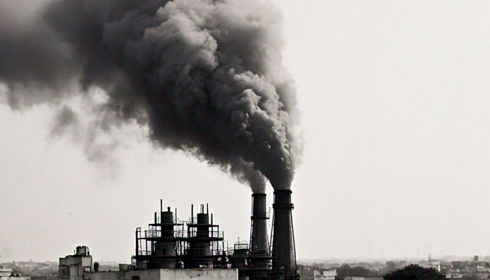
Pithampur Protests Escalate over Bhopal Toxic Waste Disposal
The Bhopal Gas Tragedy of 1984 left an everlasting mark on Indian history, killing thousands of people and leaving decades of coping with its deadly legacy. Decades later, the tragedy's aftermath—hazardous waste from the Union Carbide plant—continues to spark debate. The latest hotspot is Pithampur, Madhya Pradesh, where protests opposing trash incineration have reached a deadly level.
According to media reports, on Friday morning, Raju Patel and Rajkumar Raghuvanshi tried self-immolation in an extreme act of protest against the incineration of poisonous Union Carbide garbage. The event caused pandemonium, bringing traffic in Neemuch-Mhow and Dhar to a halt and forcing authorities to redirect vehicles to alternate routes. While both protestors were immediately taken to a community health clinic, their actions highlight the growing desperation and concern among communities about the safety of the trash disposal procedure.
Pithampur residents have a deep distrust of the government's handling of hazardous waste, which derives from the horrific legacy of the Bhopal Gas Tragedy. Decades after the tragedy, 350 metric tonnes of hazardous trash remain on the original site, a harsh reminder of unresolved environmental and public health issues. While officials have attempted to relocate and dispose of the garbage, communities near suggested disposal locations, such as Pithampur, fear they will be forced to bear the weight of a disaster they did not cause.
Pointing out that their complaints are legitimate, the protesters say that toxic chemical incineration increases the possibility of releasing airborne contaminants, which could damage people in the local area. Furthermore, a lack of transparency in the disposal process has heightened concerns, with many asking whether necessary safety measures are being followed. The risk of groundwater contamination exacerbates tensions, since communities are concerned about the long-term health repercussions of toxic residue exposure. Most importantly, the memory of the first Bhopal tragedy serves as a traumatic example, making people afraid that failing to care for the environment and lack of government oversight could again lead to terrible results.
This contrast between government guarantees and popular scepticism highlights the critical need for a transparent, scientifically proven, and community-approved strategy for hazardous waste disposal—one that prioritises public safety over administrative convenience.
As the protests grew, local officials, notably SDM Pramod Kumar Gurjar and Dhar Additional SP Indrajit Bagalwar, sought to quell them. SDM Gurjar informed them that scientific processes were being followed, but his protests went unheard. The scepticism goes deep, and the officials' pledges have failed to persuade the populace.
Protesters marched towards Ramky Enviro Industries, where incineration was already starting, escalating the situation. Security officers, anticipating trouble, erected barriers and deployed hundreds of troops to keep the throng from assaulting the site.
The ongoing protests in Pithampur illustrate a bigger, unresolved crisis: the fate of Union Carbide's hazardous legacy, later taken over by Dow Chemicals, which has consistently aroused public outrage whenever disposal attempts have been made. This is not an isolated conflict but rather part of a recurring pattern in other places, demonstrating a strong scepticism about the government's handling of hazardous waste. Despite numerous initiatives to burn, bury, or export the vestiges of the Bhopal Gas Tragedy, none have received public support, raising serious concerns about India's approach to industrial disaster management.
At the heart of the problem is a fundamental dilemma: Why, nearly four decades later, has India not found a globally acknowledged technique for disposing of this waste? Why don't local communities agree with the government that incineration is the best solution? Should the garbage remain in Bhopal, where the damage is already known, or would this be an unjust prolongation of the tragedy? Could isolated, cutting-edge facilities guarantee safe disposal without jeopardising future populations? Or is there a better, more sustainable way that has gone untapped due to budgetary and logistical constraints?
The protestors say that resistance will persist until authorities handle these issues with scientific honesty, public consensus, and political will. The protests in Pithampur are a striking reminder that India is still dealing with the aftermath of a calamity that should have been settled decades ago.
As the government moves forward with incineration, public outcry grows. Protesters claim that hurrying through disposal without sufficient public participation reflects the same lack of accountability and transparency that resulted in the 1984 disaster. The scars of Bhopal have not dissipated, and the protests in Pithampur serve as a sharp reminder that India has yet to fully confront its most devastating industrial tragedy.
Unrest is expected to continue until a clear, open, and publicly recognised plan for toxic waste disposal is in place, as people who live near these sites dread another Bhopal like tragedy.